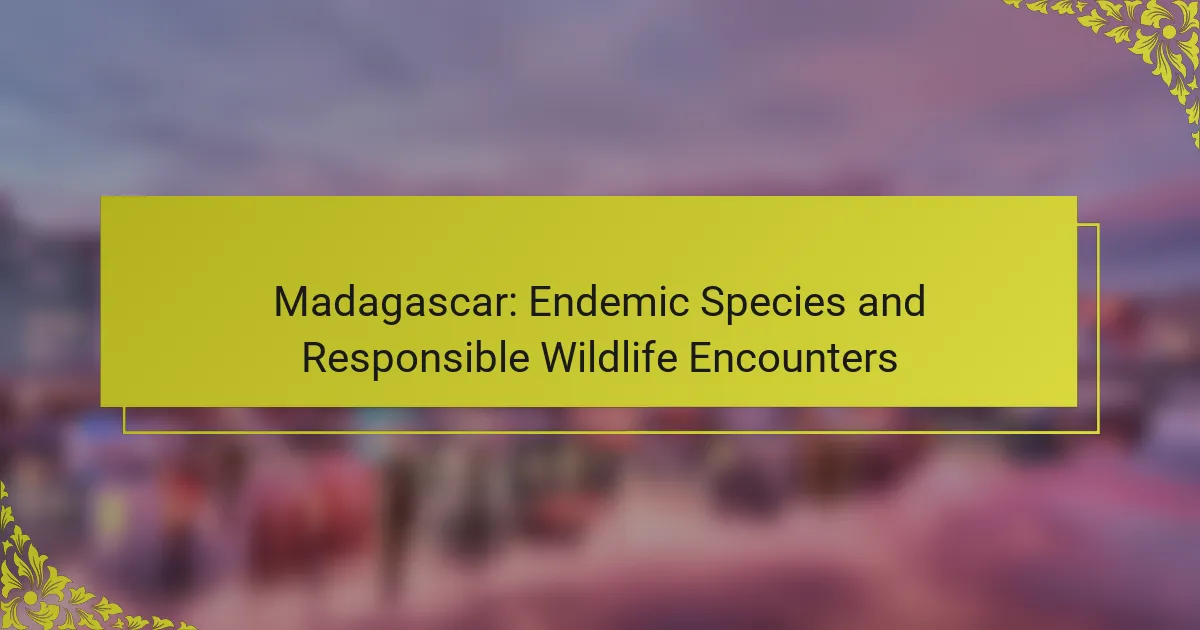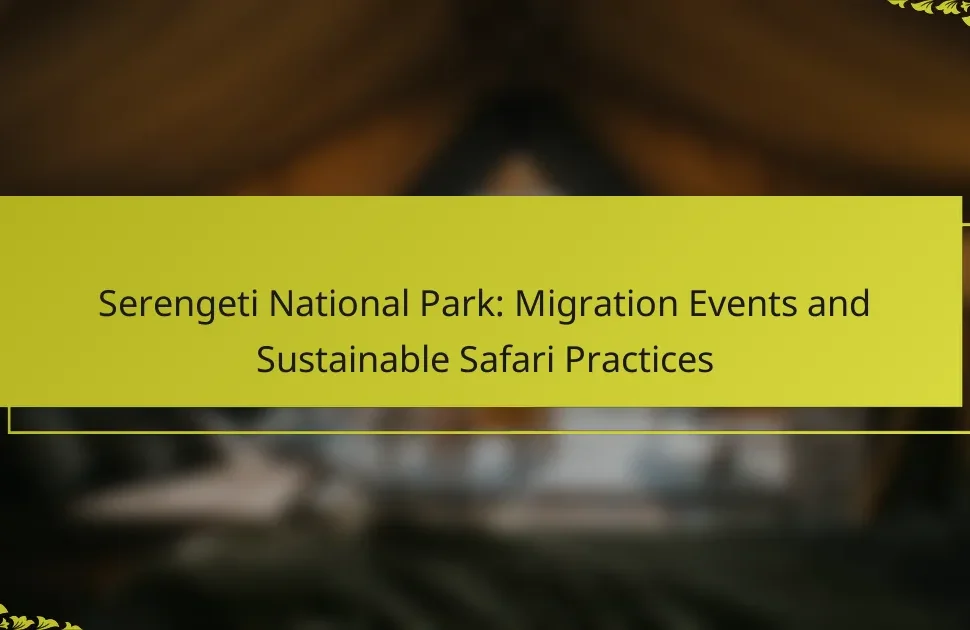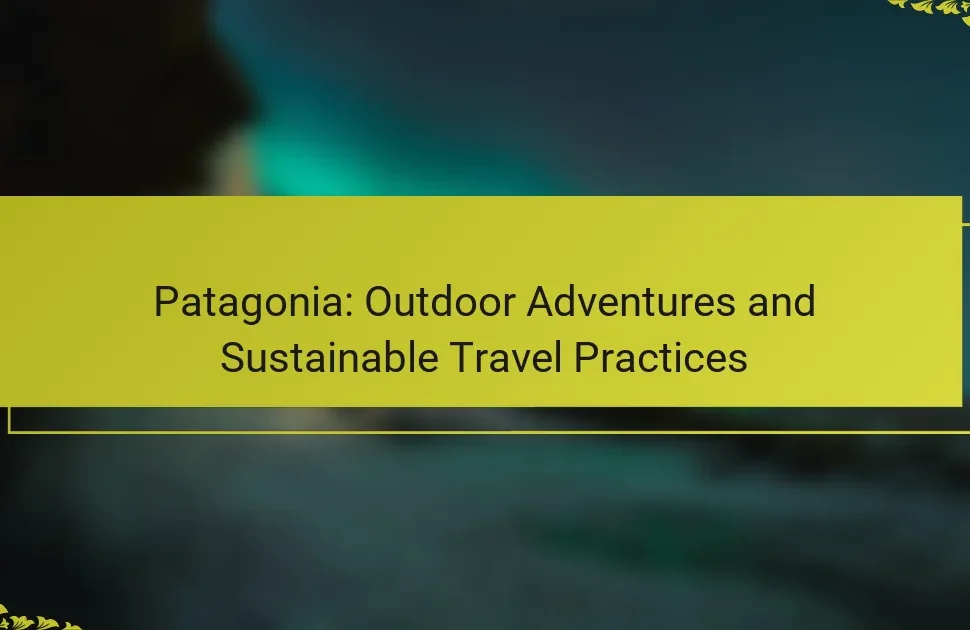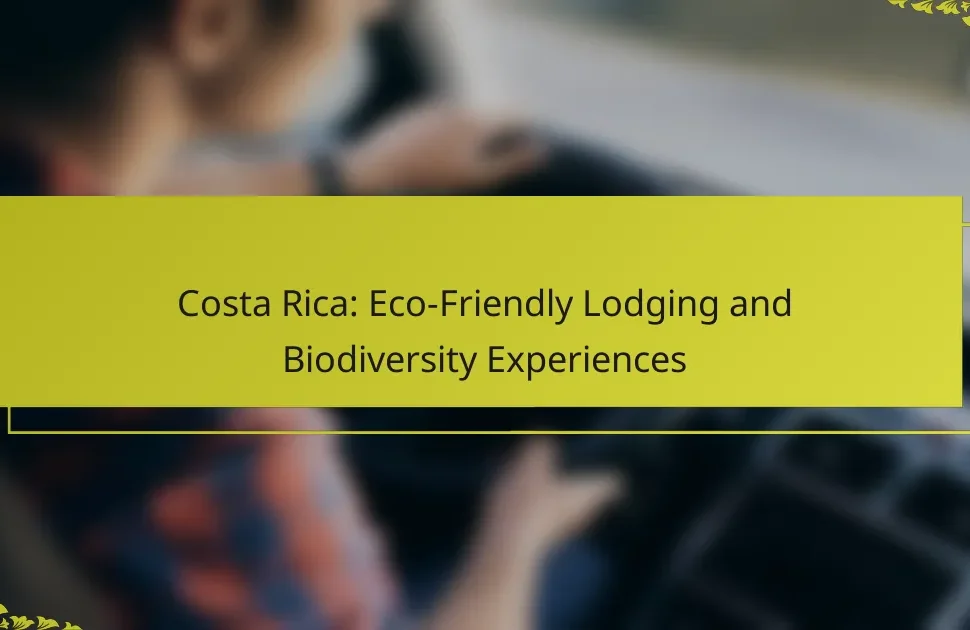Madagascar is a treasure trove of endemic species, with over 90% of its wildlife found nowhere else on Earth. This article explores the unique biodiversity of Madagascar, highlighting iconic species like lemurs and chameleons. It emphasizes the importance of responsible wildlife encounters and conservation efforts to protect these remarkable creatures and their habitats. Understanding the ecological significance of Madagascar’s wildlife fosters appreciation and encourages sustainable tourism practices.
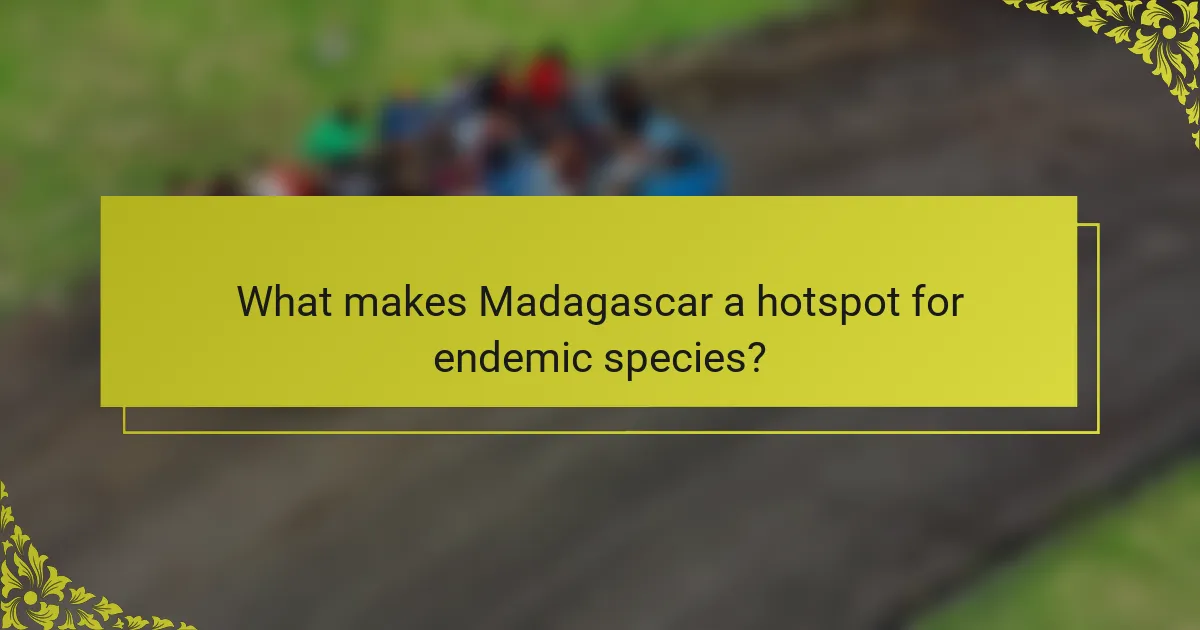
What makes Madagascar a hotspot for endemic species?
Madagascar is a hotspot for endemic species due to its long isolation from other landmasses. This unique evolutionary history has led to the development of over 90% of its wildlife being found nowhere else on Earth. The island’s diverse habitats, ranging from rainforests to deserts, support a wide array of flora and fauna. Notably, lemurs are among the most recognized endemic species, showcasing Madagascar’s rich biodiversity. Conservation efforts are crucial to protect these species from habitat loss and climate change, ensuring their survival for future generations.
Which ecosystems contribute to biodiversity in Madagascar?
Madagascar’s biodiversity is significantly supported by its unique rainforests, dry deciduous forests, and spiny forests. These ecosystems host a variety of endemic species, including lemurs and chameleons. The rainforests, characterized by high humidity and rich vegetation, provide habitat for numerous species. Dry deciduous forests, with distinct seasonal changes, support a unique set of flora and fauna. Spiny forests, found in the south, are home to specialized plants and animals adapted to arid conditions. Each ecosystem plays a crucial role in maintaining Madagascar’s ecological balance and supporting wildlife encounters.
How do geological factors influence species endemism?
Geological factors significantly influence species endemism in Madagascar. The island’s unique geology, including its ancient landmass and diverse topography, creates isolated habitats. These habitats foster evolutionary processes, leading to high levels of species differentiation. For instance, Madagascar’s rift valleys and mountainous regions provide distinct ecological niches. Consequently, many species, such as lemurs and chameleons, have evolved uniquely in this environment, resulting in a rich endemic biodiversity.
What role do climate variations play in species diversity?
Climate variations significantly influence species diversity in Madagascar. The island’s unique ecosystems have evolved in response to changing climates, leading to a high level of endemism. For instance, temperature and rainfall patterns directly affect habitat availability, impacting species survival and reproduction. The diverse climatic zones, from tropical rainforests to arid regions, support a wide range of flora and fauna. As a result, Madagascar hosts over 12,000 plant species, with around 80% being endemic. This remarkable biodiversity is threatened by climate change, which can disrupt these delicate ecosystems and lead to species extinction.
![]()
Which iconic endemic species can be found in Madagascar?
Madagascar is home to numerous iconic endemic species, including the lemur, fossa, and various chameleons. These species are unique to the island due to its long isolation from other landmasses. Lemurs, for instance, are primates that exhibit diverse forms and behaviors, making them a significant part of Madagascar’s ecological identity. The fossa, a carnivorous mammal, is notable for its resemblance to a small cougar and plays a crucial role in the island’s predator-prey dynamics. Additionally, Madagascar hosts over half of the world’s chameleon species, showcasing vibrant colors and unique adaptations. Responsible wildlife encounters can enhance appreciation for these remarkable creatures while promoting conservation efforts.
What are the unique features of lemurs in Madagascar?
Lemurs in Madagascar possess unique features such as their large eyes adapted for night vision and their highly social behavior. They are known for their diverse vocalizations, which facilitate communication within groups. Additionally, lemurs exhibit a range of sizes and colors, with some species like the Indri being the largest and others like the Mouse Lemur being among the smallest primates. Their unique adaptations to Madagascar’s ecosystems, including specialized diets and arboreal lifestyles, further distinguish them from other primates.
How do chameleons in Madagascar differ from those in other regions?
Chameleons in Madagascar exhibit unique adaptations compared to those in other regions. Madagascar’s chameleons display vibrant colors and specialized camouflage, enhancing their survival in diverse habitats. The island is home to over half of the world’s chameleon species, many of which are endemic. These species often have distinct behaviors, such as unique mating rituals and territorial displays, which are less common in chameleons from other areas. For example, the Parson’s chameleon, native to Madagascar, can grow up to 68 cm, making it one of the largest chameleons globally. In contrast, many chameleons found elsewhere are significantly smaller, highlighting Madagascar’s unique biodiversity.
What are the rare species of reptiles and amphibians in Madagascar?
Madagascar is home to several rare species of reptiles and amphibians, including the Madagascar leaf-nosed frog, the Ploughshare tortoise, and the Madagascar chameleon. These species are unique to the island and face threats from habitat loss and climate change. Conservation efforts are critical to protect their natural habitats and ensure their survival. Notably, the Ploughshare tortoise is critically endangered, with fewer than 100 individuals remaining in the wild.
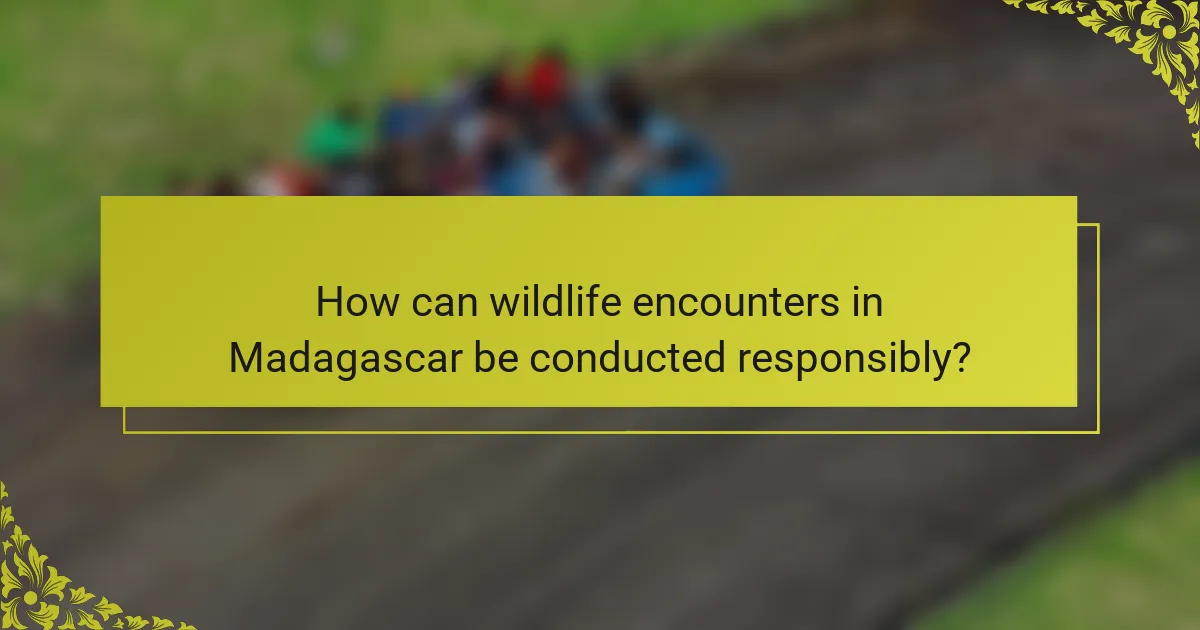
How can wildlife encounters in Madagascar be conducted responsibly?
Responsible wildlife encounters in Madagascar prioritize conservation and respect for endemic species. Visitors should follow guidelines set by local authorities and conservation organizations.
Engage with certified guides who understand the ecosystem and its unique attributes. Limit disturbance to habitats and maintain a safe distance from wildlife. Avoid feeding animals, as it disrupts their natural behaviors.
Participate in community-based tourism initiatives that support local conservation efforts. This fosters sustainable practices while benefiting local communities.
Educate yourself about Madagascar’s endemic species and their ecological roles. Understanding the importance of biodiversity enhances the experience and promotes responsible behavior.
What guidelines should travelers follow to minimize impact?
Travelers should follow guidelines that promote conservation and respect for Madagascar’s unique wildlife. Prioritize responsible tourism practices that minimize disturbance to endemic species.
1. Stay on marked trails to protect natural habitats.
2. Observe wildlife from a distance; avoid feeding or touching animals.
3. Choose eco-friendly accommodations that support local conservation efforts.
4. Respect local customs and regulations regarding wildlife interactions.
5. Participate in guided tours led by knowledgeable locals to enhance awareness and minimize impact.
Which organizations promote responsible wildlife tourism in Madagascar?
Organizations promoting responsible wildlife tourism in Madagascar include the World Wildlife Fund, Madagascar National Parks, and Conservation International. These organizations focus on sustainable practices that protect Madagascar’s unique biodiversity. They offer guidelines for eco-friendly tourism and collaborate with local communities to enhance conservation efforts. Their initiatives help ensure that wildlife encounters are ethical and beneficial for both visitors and the environment.
How can local communities benefit from wildlife encounters?
Local communities can benefit from wildlife encounters through eco-tourism, education, and conservation efforts. Eco-tourism generates revenue, creating jobs and funding local initiatives. Education programs raise awareness about endemic species, fostering appreciation and protection. Conservation efforts help preserve habitats, ensuring sustainable wildlife populations and enhancing community well-being. These interactions promote cultural exchange and strengthen community identity, making wildlife encounters a vital resource for local development.
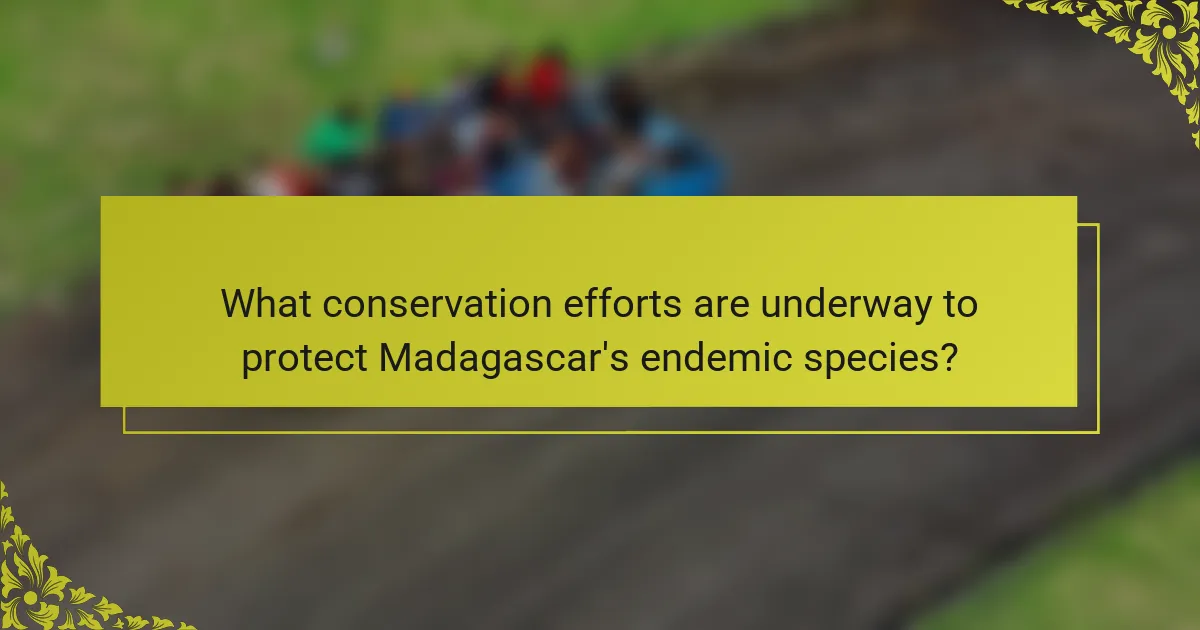
What conservation efforts are underway to protect Madagascar’s endemic species?
Conservation efforts in Madagascar focus on habitat protection, community engagement, and research initiatives. Key strategies include establishing protected areas, promoting sustainable tourism, and supporting local conservation organizations. These efforts aim to safeguard the unique biodiversity, including over 90% of species that are found nowhere else. Collaborative projects between government and NGOs enhance conservation awareness and practices among local communities.
How do local and international organizations collaborate on conservation?
Local and international organizations collaborate on conservation by sharing resources, expertise, and strategies to protect Madagascar’s endemic species. These partnerships enhance biodiversity preservation efforts and promote responsible wildlife encounters. Collaborative initiatives often focus on habitat restoration, community engagement, and sustainable tourism practices, which benefit both local ecosystems and economies. For instance, joint research projects help identify critical areas for conservation, while educational programs raise awareness about the importance of protecting unique species like lemurs and baobabs. Such cooperation fosters a holistic approach to safeguarding Madagascar’s rich natural heritage.
What challenges do conservationists face in Madagascar?
Conservationists in Madagascar face significant challenges, including habitat destruction, invasive species, and climate change. Deforestation, primarily driven by agriculture and logging, threatens endemic species. Invasive species disrupt local ecosystems, outcompeting native flora and fauna. Climate change exacerbates these issues, leading to unpredictable weather patterns and habitat loss. These factors collectively hinder conservation efforts and endanger Madagascar’s unique biodiversity.
Which success stories highlight effective conservation strategies?
Madagascar showcases effective conservation strategies through community-led initiatives and eco-tourism. These efforts focus on protecting endemic species while promoting sustainable wildlife encounters. For example, the Madagascar Biodiversity Partnership enhances local livelihoods by integrating conservation with community development. As a result, species like the indri and fossa benefit from reduced habitat destruction. The success of these strategies highlights the importance of local engagement in preserving biodiversity.
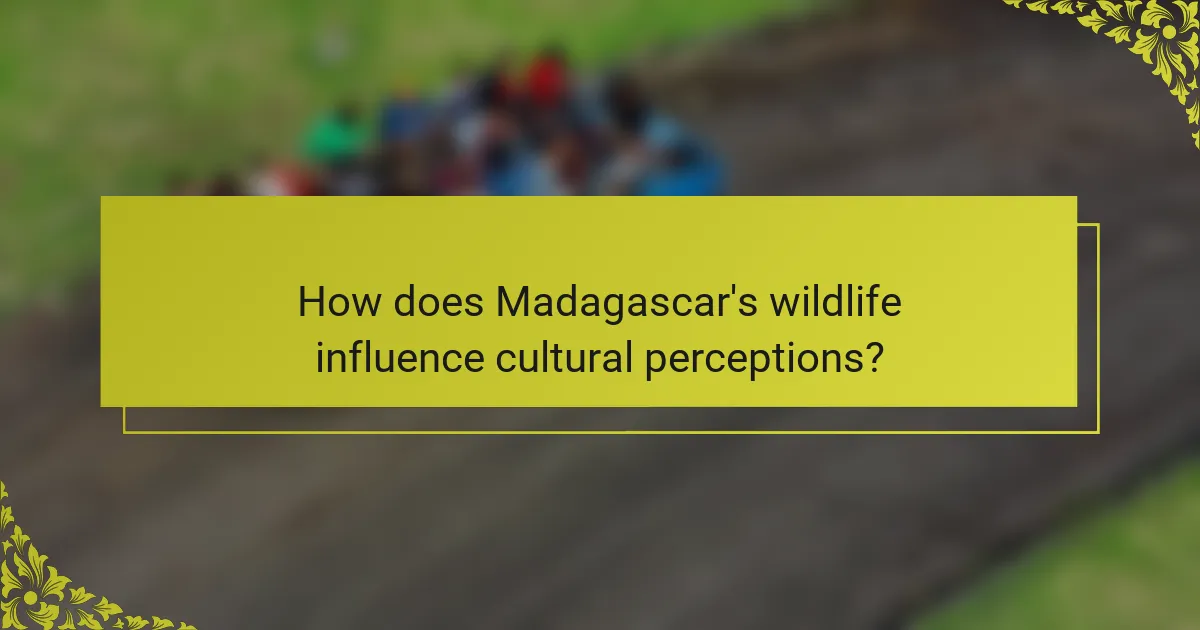
How does Madagascar’s wildlife influence cultural perceptions?
Madagascar’s wildlife profoundly shapes cultural perceptions through its unique endemic species. These species, such as lemurs and baobab trees, are integral to local traditions and folklore. They symbolize biodiversity and ecological significance, influencing how communities view nature. Conservation efforts further intertwine wildlife with cultural identity, fostering respect and responsibility towards the environment. As a result, wildlife encounters promote sustainable tourism and educate visitors about the importance of preserving Madagascar’s unique ecosystem.
What traditional beliefs are associated with endemic species?
Traditional beliefs associated with endemic species in Madagascar emphasize their spiritual significance and role in local culture. Many communities view these species as sacred or as embodiments of ancestral spirits, leading to conservation practices rooted in respect and reverence. For instance, lemurs are often considered protectors of the forest, influencing local customs and rituals. These beliefs foster a connection between the people and their environment, promoting sustainable interactions with wildlife.
How do local communities engage with wildlife in daily life?
Local communities in Madagascar engage with wildlife through conservation efforts, sustainable tourism, and educational programs. These interactions foster respect for endemic species while promoting environmental stewardship. For example, local guides lead eco-tours that highlight unique species like lemurs, enhancing awareness and appreciation. Community-based conservation initiatives help protect habitats and involve locals in preserving biodiversity. As a result, these efforts create a balance between human activity and wildlife protection, ensuring the survival of Madagascar’s distinctive ecosystems.
What role does ecotourism play in cultural preservation?
Ecotourism plays a crucial role in cultural preservation by promoting sustainable practices that protect local traditions and ecosystems. In Madagascar, responsible wildlife encounters encourage the conservation of endemic species while supporting indigenous communities. This approach fosters cultural exchange and awareness, helping to maintain the unique heritage of Madagascar. Additionally, ecotourism generates income that can be reinvested into community projects, further enhancing cultural preservation efforts.
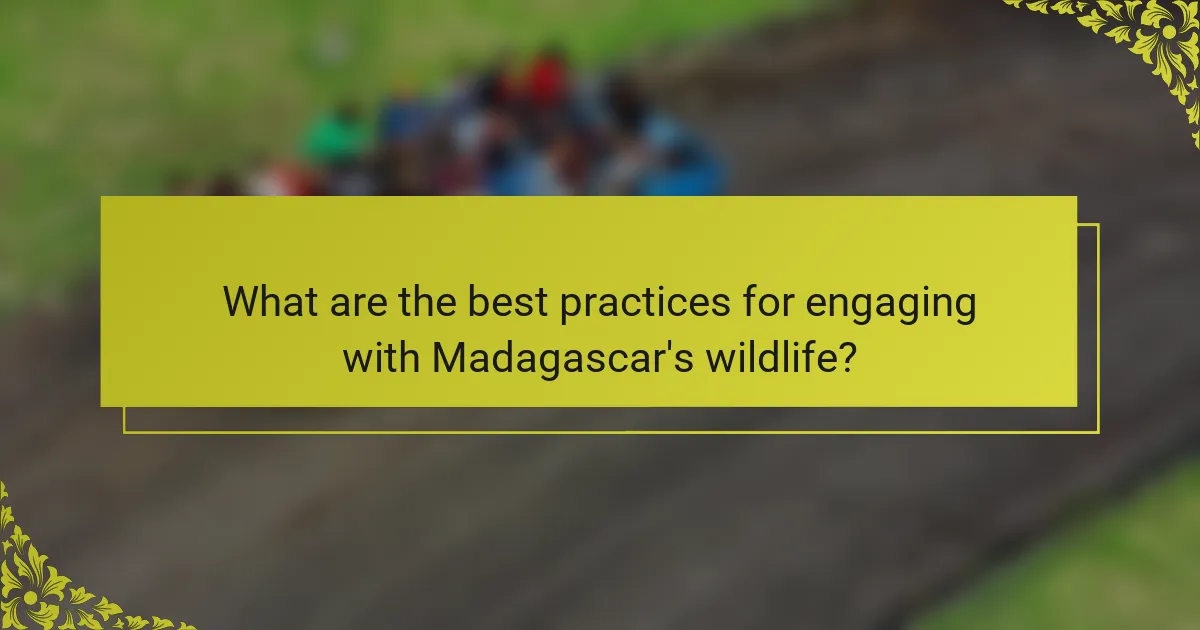
What are the best practices for engaging with Madagascar’s wildlife?
Engaging with Madagascar’s wildlife requires responsible practices to ensure conservation and safety. Prioritize guided tours led by local experts who understand the ecosystem. Respect wildlife by maintaining a safe distance and avoiding feeding animals. Use eco-friendly products to minimize environmental impact. Participate in conservation programs to support local efforts. Lastly, educate yourself on endemic species to enhance your appreciation and understanding of their habitats.
How can travelers ensure they are supporting conservation?
Travelers can support conservation in Madagascar by choosing eco-friendly tours and respecting wildlife habitats. Engaging with local conservation initiatives helps protect endemic species. Opt for guides trained in sustainable practices, ensuring minimal impact on ecosystems. Additionally, visitors should avoid purchasing products that exploit wildlife, such as souvenirs made from endangered species.
What common mistakes should be avoided during wildlife encounters?
To ensure safe and enjoyable wildlife encounters in Madagascar, avoid these common mistakes.
1. Disturbing habitats: Do not disrupt the natural environment of endemic species like lemurs and chameleons.
2. Feeding wildlife: Refrain from feeding animals, as it can alter their natural behaviors and diets.
3. Ignoring guidelines: Always follow local regulations and guidelines provided by guides or parks.
4. Getting too close: Maintain a respectful distance to prevent stress to the animals and ensure your safety.
5. Using flash photography: Avoid flash, as it can startle wildlife and disrupt their natural behaviors.
6. Littering: Dispose of waste properly to protect Madagascar’s unique ecosystems.
Which resources provide further information on responsible wildlife tourism?
Several resources offer insights on responsible wildlife tourism in Madagascar. Key organizations include the World Wildlife Fund (WWF), which provides guidelines on sustainable practices. The Madagascar National Parks website outlines regulations for wildlife encounters. Additionally, local tour operators often publish responsible tourism practices. Conservation International also shares valuable information on protecting endemic species while engaging in wildlife tourism. Finally, academic journals and articles focus on the ecological impact of tourism in Madagascar, contributing to a deeper understanding of responsible practices.
